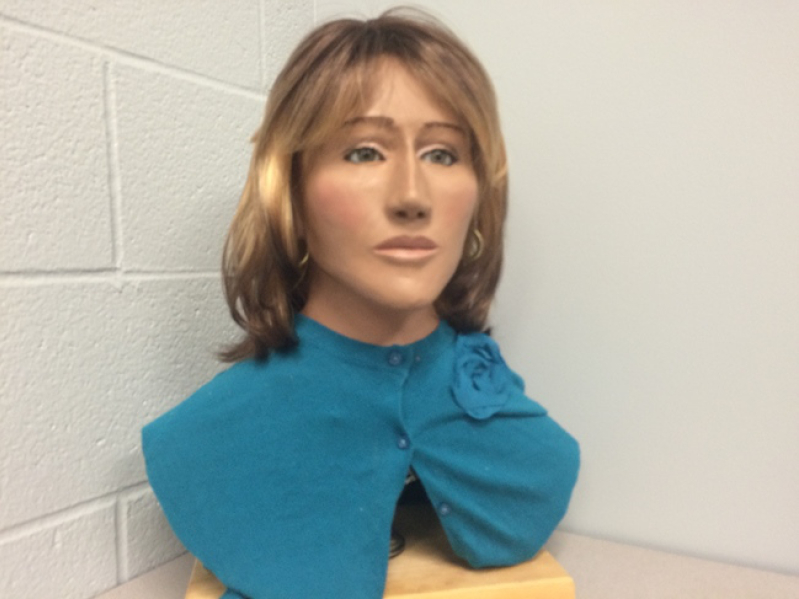
It might not be the first time, but it is one of the most momentous events for forensic science and the news media.
News of reviving a 42-year old cold case recently broke the internet, not because they have found the murder suspect, but because they found the victim. The suspected murder victim, who police thought to be dead for over 40 years now, is actually alive and well. Police found out about this fact when they released the name of the suspected murder victim through a News Conference on Friday, October 9, 2015, at Lickdale, Pennsylvania. During the press conference, Pennsylvania State Police, led by Trooper Nathan Trate, announced that they have a facial reconstruction of what the victim could have looked like during the time of the murder. Trate also suggested that the body could belong to Betsy Langjahr, one of four names that came out during the investigation, as she was the only person whose name was not ruled out of the case. According to the NY Daily News, police received multiple tips about their suspected murder victim to be alive including a call from alleged victim's son, on Tuesday, October 13, 2015. Betsy Langjahr's estranged brother, Billy, told the NY Daily News that his sister's son was one of the people who heard the news about the case and called the police station. Given this detail, the Pennsylvania State police are now able to rule out Betsy Langjahr as the victim of the 1973 murder case.
What Happened 42 Years Ago?
The Union Township 1973 cold case is one of those cases that were not solved due to lack of evidence and of supporting information about the victim. In a press release by Lebanon Daily News police stated that the case began on October 10, 1973, when a woman's body was found in a wooded area on Fort Indiantown Gap land in Union Township. The body was located by two deputy game protectors who were driving around the area and noticed the strong stench of rotting flesh. They initially thought it belonged to a dead deer however it turned out to be a decaying body of a woman who died around two to three weeks from the time of discovery. This, therefore, did not allow the police to identify the victim as there was no marks or identification left in and with the victim's body. The lack of evidence and identification eventually caused the case to turn cold. The case was then transferred in the hands of one investigator to another. As Trooper Nathan Trate got hold of the case, he realized that he can use new forensic technology to identify the victim and hopes to finally put closure to this case. Trate then proceeded to have a reconstructionist work with the old sketches and create a forensic bust to determine how the victim could have looked like during the time of the murder. He wants to trigger the memories of people who might have known and remembered the victim, Trate said in an interview with Washington Post. He then released a news conference showing the bust to the media the same time that he released the alleged victim's name.
The name Betsy Langjahr has been incorporated in the investigation even before Trate got hold of the case. Betsy is one of the four runaways from Talbot Hall, a safe house for troubled youth, during the same time of the murder and the only name that was not cleared out. The safe house is within the vicinity of the crime which led the investigators to believe that the victim could have come from it. Three of the four already came forward to clear out their names earlier in the investigation, Trate stated in his interview with Washington Post. According to Langjahr's family, she might have got married during the years of investigation which caused the police to not find information about her. Langjahr has also been estranged from the family since she ran away according to her brother Billy in an interview with New York Daily News.
Now that all four names are cleared out, the investigation is back at the beginning; figuring out who the victim was and what was her name. However, Trate is not losing hope in cracking this case, as they are looking for new leads using the National Missing and Unidentified Persons System and the National Center for Missing and Exploited Children, he affirmed in his interview with Washington Post. Even the estranged brother of Betsy Langjahr, Billy, believes that someone out there should know the victim and having the reconstructed image of the victim will help identify her, according to the interview with New York Daily News.
This event can still be considered as a great breakthrough for forensic science though it did not entirely crack the case. It still brought new light to the investigation as it proved that the information the police has on the case is untrue and will eventually lead them to identifying the right victim and in the long run, the suspect too. This could eventually be another version of the "Night Stalker" case where the use of new forensic technology made way to finding the killer. As stated in an NIJ special report "Today, investigators who understand which evidence may yield a DNA profile can identify a suspect in ways previously seen only on television."







